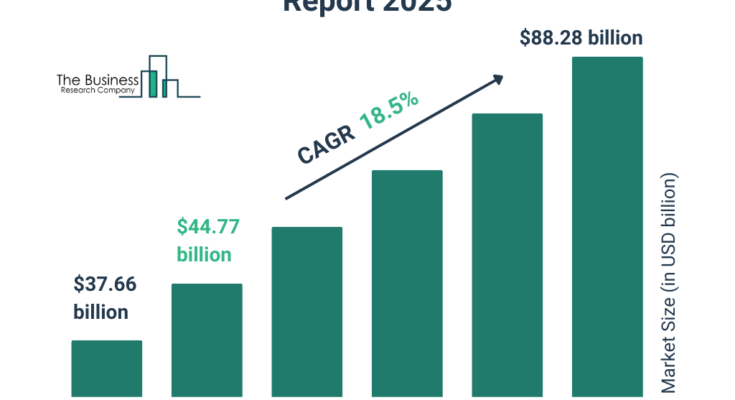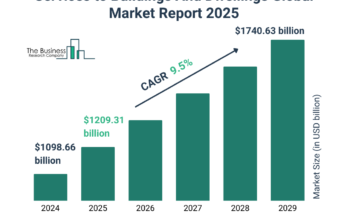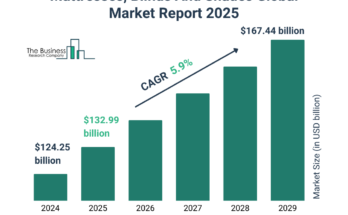What are the latest figures on the net-zero energy buildings market’s size and projected CAGR?
The net-zero energy buildings market size has grown rapidly in recent years. It will grow from $37.66 billion in 2024 to $44.77 billion in 2025 at a compound annual growth rate (CAGR) of 18.9%. The growth in the historic period can be attributed to rising urbanization, growing emphasis on lowering greenhouse gas emissions and combating climate change, growing environmental awareness, adoption of net-zero energy buildings is increasing in the commercial sector, and growing need for energy efficiency.
The net-zero energy buildings market size is expected to see rapid growth in the next few years. It will grow to $88.28 billion in 2029 at a compound annual growth rate (CAGR) of 18.5%. The growth in the forecast period can be attributed to growing emphasis on sustainability and environmental protection, rising environmentally friendly construction solutions, increasing government initiatives to reduce carbon emissions, increasing temperature, and rising population. Major trends in the forecast period include innovations in energy-efficient building techniques, advancements in renewable energy technology, innovations in sustainable building techniques, green technologies, and integration of advanced building design concepts.
Get Your Free Sample of The Global Net-Zero Energy Buildings Market Report:
https://www.thebusinessresearchcompany.com/sample.aspx?id=19123&type=smp
Which Market drivers have played a significant role in driving the net-zero energy buildings market?
The increase in the demand for renewable energy sources is expected to propel the growth of the net-zero energy buildings market going forward. Renewable energy sources, such as solar, wind, and hydropower, can be replenished naturally over time. The demand for renewable energy sources increases due to social contagion, decentralized energy generation, corporate commitments, public health awareness, and climate change mitigation. Net-zero energy buildings minimize energy consumption through efficient design and construction by generating on-site renewable energy to offset their energy needs. These buildings set a benchmark for energy efficiency and environmental stewardship, making them pivotal in transitioning to a more sustainable future. For instance, in 2022, according to a report published by the Department of Energy, a US-based government organization, domestic solar energy generation is projected to rise by 75% from 163 billion kilowatt-hours (kWh) in 2023 to 286 billion kWh in 2025. Therefore, the increase in the adoption of renewable energy sources drives the net-zero energy buildings market.
What are the key segments within the net-zero energy buildings market?
The net-zero energy buildingsmarket covered in this report is segmented –
1) By Equipment: Lighting, Walls And Roofs, Heating, Ventilation, And Air Conditioning (HVAC) Systems, Other Equipment
2) By Service: Software, Consulting And Designing
3) By Construction Phase: New Construction, Renovation Or Retrofit, Hybrid Approach
4) By Technology Integration: Passive Design Strategies, Energy-Efficient Systems, Renewable Energy Sources
5) By End-User: Residential, Non-Residential
Subsegments:
1) By Lighting: LED Lighting, Smart Lighting Systems, Daylighting Systems
2) By Walls And Roofs: Insulated Walls, Green Roofs, Solar Roof Panels
3) By Heating, Ventilation, And Air Conditioning (HVAC) Systems: Energy-Efficient HVAC Units, Heat Pumps, Ventilation Systems With Energy Recovery
4) By Other Equipment: Renewable Energy Systems, Energy Storage Systems, Smart Building Management Systems
Order your report now for swift delivery
https://www.thebusinessresearchcompany.com/report/net-zero-energy-buildings-global-market-report
Which key players are shaping the net-zero energy buildings market?
Major companies operating in the net-zero energy buildings market are Hitachi Ltd., Siemens AG, General Electric Company, Panasonic Corporation, Schneider Electric SE, Mitsubishi Electric Corporation, Honeywell International Inc., Deutsche Bank AG, Daikin Industries Ltd., Johnson Controls Inc., Carrier Global Corporation, Trane Technologies PLC, Skanska AB, Mahindra Group, Kingspan Group PLC, Lendlease Corp, Rockwool Group, CannonDesign Inc., Integral Group Inc., GI Quo Vadis Inc.
Which transformative trends will shape the net-zero energy buildings market landscape?
Major companies operating in the net-zero energy buildings market are focused on developing innovative solutions, such as open AI-enabled suites for net-zero buildings to enhance energy efficiency, streamline building management, and reduce carbon emissions. Open AI-enabled suites for net-zero buildings refer to integrated systems that use open AI technologies to optimize and manage various aspects of buildings aiming to achieve net-zero energy consumption. These suites typically incorporate artificial intelligence and machine learning algorithms to enhance energy efficiency, sustainability, and building performance. For instance, in June 2022, Siemens AG, a Germany-based automation company, launched Building X, an innovative, open AI-enabled suite designed to facilitate the development of net-zero buildings. This suite is part of the Siemens Xcelerator initiative, which aims to streamline digital transformation across various sectors, including building management. This is structured to be modular and scalable, allowing for seamless integration of various building systems. This design helps eliminate complexity in managing building operations and supports the transition toward net-zero emissions.
How do regional factors impact the net-zero energy buildings market, and which region is the largest contributor?
North America was the largest region in the net-zero energy buildings market in 2024. Europe is expected to be the fastest-growing region in the forecast period. The regions covered in the net-zero energy buildings market report are Asia-Pacific, Western Europe, Eastern Europe, North America, South America, Middle East, Africa.
What Does The Net-Zero Energy Buildings Market Report 2025 Offer?
The net-zero energy buildings market research report from The Business Research Company offers global market size, growth rate, regional shares, competitor analysis, detailed segments, trends, and opportunities.
A net-zero energy building (NZEB) is a building that produces as much energy as it consumes on an annual basis. This balance is achieved through energy efficiency and renewable energy sources, such as solar panels or wind turbines. A net-zero energy building aims to reduce greenhouse gas emissions and reliance on non-renewable energy, contributing to sustainable building practices.
Purchase the exclusive report now to unlock valuable market insights:
https://www.thebusinessresearchcompany.com/purchaseoptions.aspx?id=19123
With over 15000+ reports from 27 industries covering 60+ geographies, The Business Research Company has built a reputation for offering comprehensive, data-rich research and insights. Armed with 1,500,000 datasets, the optimistic contribution of in-depth secondary research, and unique insights from industry leaders, you can get the information you need to stay ahead.
Our flagship product, the Global Market Model, is a premier market intelligence platform delivering comprehensive and updated forecasts to support informed decision-making.
Contact Us:
The Business Research Company
Europe: +44 207 1930 708
Asia: +91 88972 63534
Americas: +1 315 623 0293
Email: info@tbrc.info
Follow Us On:
LinkedIn: https://in.linkedin.com/company/the-business-research-company
Twitter: https://twitter.com/tbrc_info
Facebook: https://www.facebook.com/TheBusinessResearchCompany
YouTube: https://www.youtube.com/channel/UC24_fI0rV8cR5DxlCpgmyFQ
Blog: https://blog.tbrc.info/
Healthcare Blog: https://healthcareresearchreports.com/
Global Market Model: https://www.thebusinessresearchcompany.com/global-market-model




